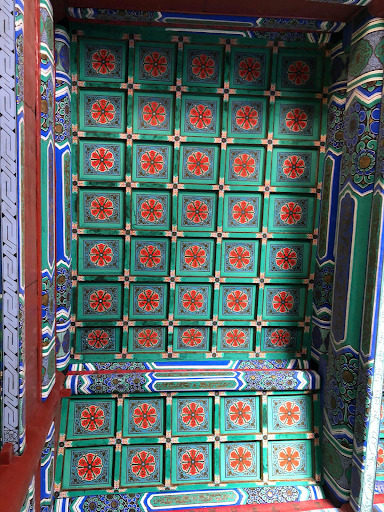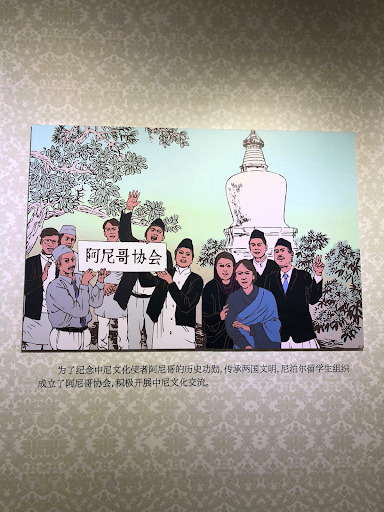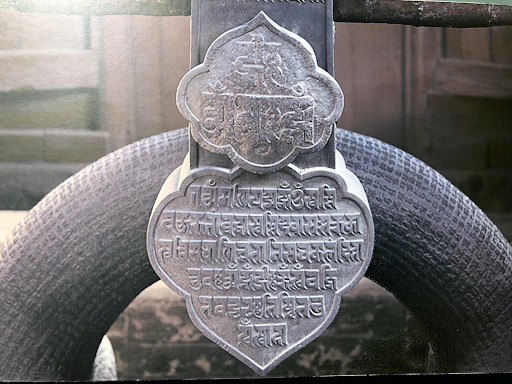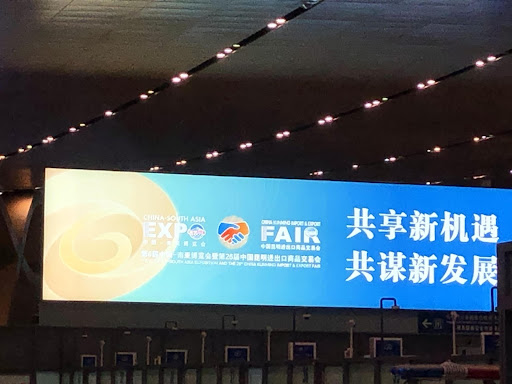Culture & Lifestyle
Tracing Nepal’s cultural history in Beijing
When it comes to highlighting Nepali culture in China, there has been very little effort from our side.
Raunab Singh Khatri and Aneka Rebecca Rajbhandari
Six years ago, when we visited Miaoying Temple, which houses the White Dagoba built by Nepali artist Arniko in Beijing, apart from a few dedicated devotees, the temple would rarely see visitors. The once bustling temple that in the past held countless rituals and fairs had become estranged even among those living in Beijing. Most of our friends and colleagues would send us photos of Miaoying temple during their visit after our relentless effort to promote it during our time in Beijing.
However, in 2023, when we arrived at the Miaoying, we were greeted by a substantial crowd of Chinese visitors of various age groups waiting in queues to enter the temple. For Nepali passport holders, entrance remains free, and there is no queue: a small privilege if you will. The entrance to the temple holds an elaborate exhibition that signifies the 750 years of the founding of the White Dagoba temple. The exhibition was thoughtful enough to include an entire room of sketched stories of Arniko’s life pasted from the book Arniko Chitrakatha that was originally presented by the Nepal-China Executive Council.
The new souvenir shop inside the temple premises had a wave of customers. To our surprise, the store manager Hu Jiyu, who was self-teaching himself Nepali language, passionately told us about his interest in tracing the roots of Arniko. Hu intends to come to Nepal soon to research the history of Arniko and cultural heritage that captures Nepal-China exchanges. The Miaoying Temple had never felt this vibrant before.

The temple is located in Beijing, which remains geographically distant to Nepal as compared to other southern Chinese cities. One can argue that Nepal shares more rich culture and history with Beijing than it does with most other countries in South Asia. Yet, when it comes to promoting awareness of our culture in Beijing, there has been very little effort from the Nepali side.
We are still reliant on the Chinese to promote tourism on our behalf. The Nepal-China cooperation exhibition at the Miaoying Temple was sponsored by three agencies, all Chinese entities as mentioned in the exhibition board. Miaoying Temple receives countless visitors in the surrounding café and restaurants with picture-perfect views of White Dagoba. The Arniko statue was brought to Miaoying temple from Nepal in early 2002 by Arniko Society in the presence of late eminent Sinologist Niranjan Bhattarai. However, without stepping into the temple, the visitors wouldn’t be informed about the Nepali artist behind the Dagoba, which is a huge miss for Nepal.
While the Arniko-built temple will take time to develop into a cultural and economic hotspot in Beijing, a 15-minute drive from here will take you to the famous Yonghegong Lama Temple, which sees jam-packed visitors. With a bundle of free incense provided at the gate, the Lama Temple is never out of crowds and witnesses hundreds of tourists every day.

Interestingly, the Lama Temple has close association with Nepal. At the end of the temple premises is the world’s tallest sandalwood statue of Maitreya Buddha recorded in the Guinness World Records. The sandalwood used to make the statue was bought from Nepal around 1750s by the seventh Dalai Lama as a gift to Emperor Qianlong, which took three whole years to reach Beijing. With better coordination, Nepal’s contribution to the temple could be emphasised more, which in turn will promote cultural tourism.
Similarly, another 15-minute drive from the Yonghegong Lama Temple will take you to the Dazhong Temple Ancient Bell Museum which shelters the largest bell in China. This bell weighs over 40 tons, has a height of over 22ft and is named after the Ming dynasty emperor, Yongle. Inscribed on the big bell are Buddhist mantras written both in Ranjana script and Chinese. The gigantic bell is difficult to capture in a single frame and the wide circumference demands absolute attention from the visitor. The description of the bell, however, fails to mention the language and instead focuses on the sutra on the bell.

Within a few kilometres in central Beijing, one can feel Nepal’s presence across multiple historical sites. Whether due to lack of awareness or preparation, Nepal’s historical connection to this core area of China’s capital remains unknown both among Beijing’s locals and Nepali people. At times we have met Nepali tourists andor officials who stay in Beijing but almost never end up visiting the temple or landmarks connected to their homeland.
Since January 8, China has dropped major travel restrictions and requirements as three years of pandemic have proven disastrous for Chinese domestic and international tourism. In that context, there is an incredible opportunity to promote Nepal in Beijing’s hotspots like the Miaoying Temple and the Yonghegong Lama Temple.
After failing to make it into the first list of countries for outbound Chinese tourists during the peak time of the Spring Festival, Nepal has finally made it to the second batch, becoming the third South Asian country after Maldives and Sri Lanka who are in the first list. With poor official publicity of Nepal on Chinese social media and public spaces, we are losing the opportunity to reintroduce Nepal post-pandemic.

Nepal is also excited about the return of Chinese tourists but underprepared to welcome them. Travelling from Kathmandu to Kunming, one can notice the conspicuous absence of Chinese-language content related to Nepal in airlines magazines and video projections. You cannot appeal to Chinese tourists the same way you appeal to the rest of the world. China has its version of social media and ecosystem, which they highly rely on to understand the destination country.
For example, one of our Chinese friends was well aware of the good Chinese restaurants in Kathmandu even before she visited Nepal. She had gleaned the knowledge from Chinese restaurant review apps.
In Nepal, we cannot stop talking about the immense Chinese tourism market, yet there has been little effort to engage the Chinese on things related to Nepal inside their own country. For instance, the Kunming Changshui International Airport’s international terminal remains empty even as it gears up for the Kunming South Asia Expo in June 2023. Yet there is little promotion of the event even within Kunming.

Recently, colourful pictures of Holi being hosted and celebrated by the Nepali Consulate in Chengdu with the local Chinese and Nepali community was circulated in Chinese social media. This indicates a relaxed Covid mindset on the part of the Chinese, offering a great way to promote Nepal. Similarly, an investment meet was organised at the Nepal Embassy in Beijing to encourage potential Chinese investors to invest in Nepal. Initiatives like these should be better synchronised.
Unless and until Nepal customises its tourism promotion based on the interests of Chinese tourists, both the number of tourists and revenues from China will remain limited.




 13.12°C Kathmandu
13.12°C Kathmandu















